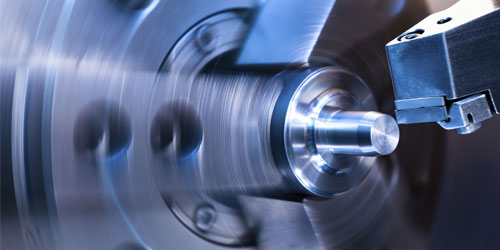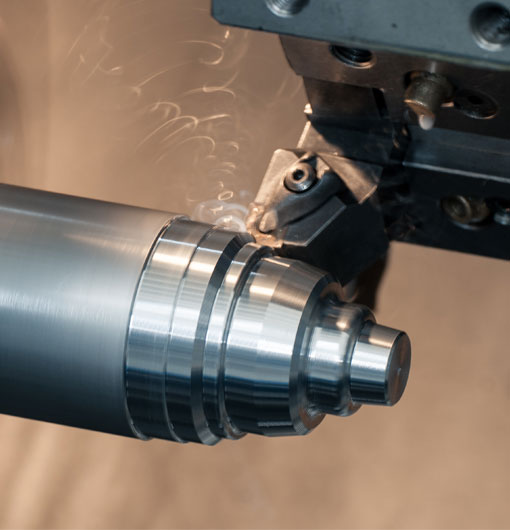Introducing CNC Brass Lathe Turning
Computer Numeric Controlled (CNC) brass lathe turning is a popular and highly efficient method for producing high-quality metal components, especially the precision-engineered thin nuts that are widely used in various industries. Thin nuts, also known as jam nuts or half nuts, are reduced-height counterparts to regular nuts and are designed for applications where space and weight constraints come into play. This blog post delves into the intricacies of CNC brass lathe turning for thin nuts and arms you with the knowledge to produce top-notch components. So let's dive in!
Brass: The Ideal Material for Thin Nuts
To begin, it's essential to understand why brass is a favored material for CNC lathe turning when creating thin nuts. Brass, an alloy of copper and zinc, offers several advantages such as excellent machinability, outstanding corrosion resistance, and good thermal conductivity. These features make brass a suitable choice for producing thin nuts that require superior durability, precision, and a polished finish. Additionally, brass is non-magnetic and easy to recycle, furthering its status as the preferred material for thin nuts production.
The CNC Lathe Turning Process
CNC lathe turning employs state-of-the-art machines programmed to follow precise specifications and instructions. By removing unwanted material through rotating cutting tools, the CNC lathe shapes the brass workpiece into the desired thin nut design. The lathe turning process involves several critical aspects, such as:
1. Programming: It is crucial to accurately program the CNC lathe, ensuring correct dimensions and optimal cutting techniques. A programmer should develop and input G-code or M-code instructions into the machine, specifying all necessary movements and operations.
2. Fixturing: Proper fixturing keeps the brass workpiece securely in place during the lathe turning process. Appropriate fixtures enhance the precision, efficiency, and overall quality of the finished thin nut.
3. Feeding: The feeding rate, or how quickly the cutting tool approaches the workpiece, significantly affects the machining process. A correct feeding rate ensures accurate production and avoids errors like deflection, excessive heat generation, or tool wear.
4. Cutting: Selecting the right cutting tool material and geometry is crucial for producing high-quality thin nuts. For brass lathe turning, carbide inserts or high-speed steel (HSS) cutting tools are the go-to choices for their excellent cutting abilities and durability.
5. Depth of Cut and Cutting Speed: The depth of cut refers to how much material is removed during each pass, while cutting speed measures the tool's velocity as it comes into contact with the workpiece. Balancing both factors is vital for maintaining efficiency, accuracy, and prolonging tool life.
6. Coolants: Utilizing appropriate coolants not only prolongs the tool life but also improves the overall smoothness and appearance of the finished brass thin nut. They serve to dissipate heat, reduce friction, and flush away any residual brass chips.
Post-Processing and Quality Control
Once the CNC brass lathe turning process is complete, post-processing might be necessary to achieve desired surface finishes or to remove any imperfections in the thin nuts. Common post-processing methods include sandblasting, polishing, and anodizing. Moreover, rigorous quality control measures are integral to ensuring the thin nut's highest standards. Inspection equipment such as gauges or coordinate measuring machines (CMM) can verify that the produced thin nuts meet the exact specifications and tolerances.
Applications of Brass Thin Nuts
Thin nuts made through CNC lathe turning have a broad range of applications across various industries. Some common uses include:
1. Automotive: Brass thin nuts are employed in numerous vehicle parts such as fuel systems, transmissions, and suspension components.
2. Aerospace: Light-weight, non-magnetic, and corrosion-resistant brass thin nuts are valuable for aerospace equipment, playing a role in navigational systems and cockpit instruments.
3. Electronics: Brass thin nuts are used in connectors, switches, and circuit board assemblies where reliable conductivity is vital.
4. Plumbing: The corrosion-resistant brass thin nuts find their place in plumbing applications for connecting and sealing pipes.
5. Architectural: In construction and architectural projects, brass thin nuts provide aesthetic elements and corrosion resistance, making them ideal for both outdoor and indoor use.
So there you have it, a comprehensive guide to mastering the art of CNC brass lathe turning for thin nuts. With an understanding of materials, processes, and applications, you can now confidently navigate the world of CNC lathe turning and produce high-quality components that meet the demanding requirements of various industries.
cnc brass lathe turning part thin nut













